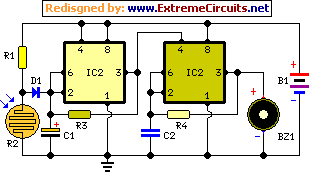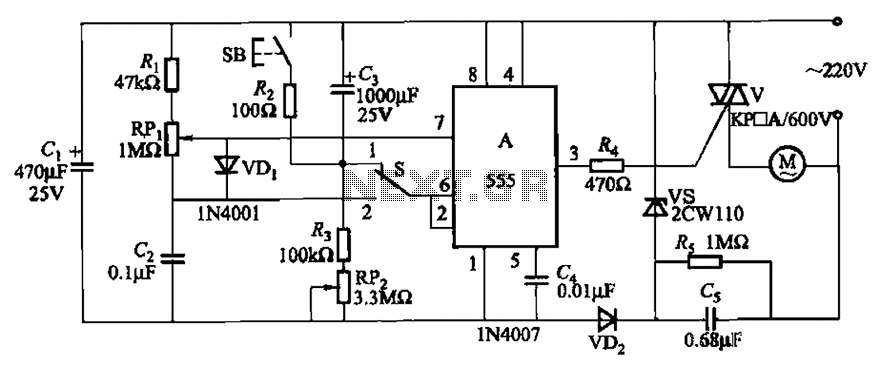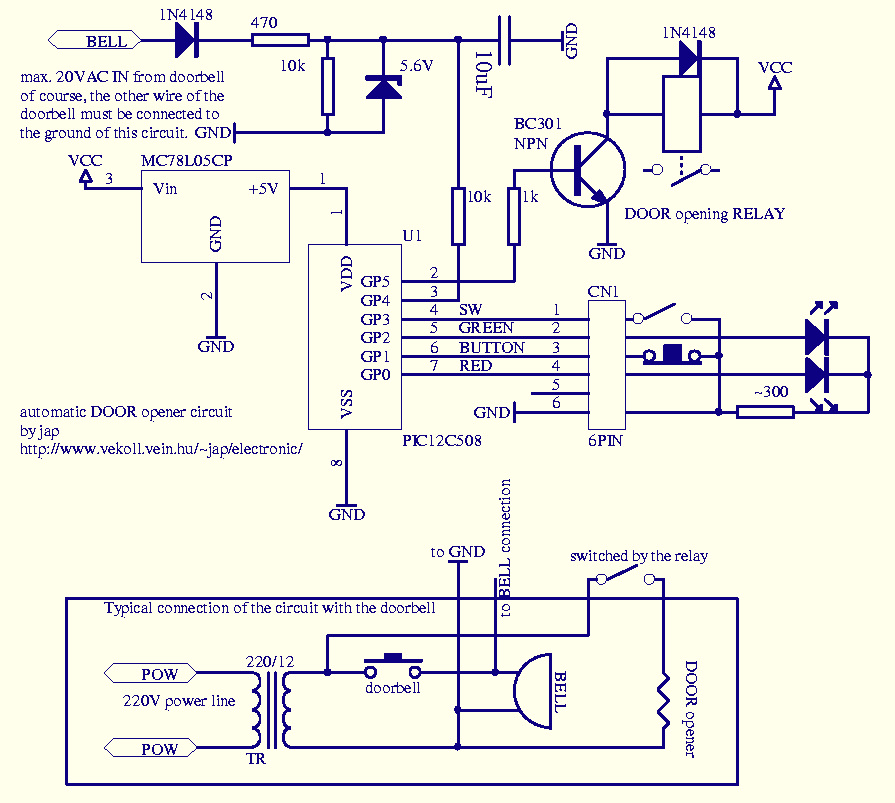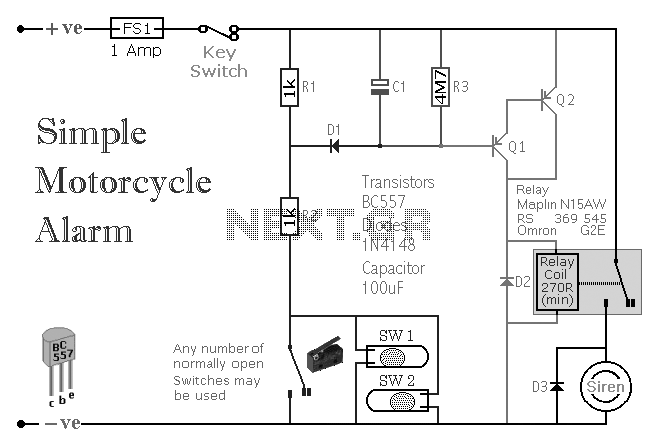
Door lock Motor

The measured resistance of the door lock motor was approximately 2 ohms. Consequently, when supplied with 5V, the current is calculated as 5V/2Ω = 2.5A. Considering that the peak output current of the L293B is 2A, the current flowing through the motor slightly exceeds 2A; however, this is not problematic as the motor will only be utilized for a few seconds. A voltage regulator (LM7805) was employed to step down the voltage from 14V to 5V. The peak output current of the LM7805 is 2.5A when the voltage difference between the input and output is 9V (14V - 5V = 9V). Therefore, the LM7805 can provide sufficient current for the door lock motor.
The circuit under discussion involves a door lock motor with a resistance of approximately 2 ohms, which draws a current of 2.5A when powered by a 5V supply. This current is slightly above the maximum continuous output of the L293B motor driver, which is rated at 2A. However, since the motor is intended to operate only for brief intervals, this temporary overload does not pose a significant risk to the driver.
To effectively manage the power supply, a voltage regulator, specifically the LM7805, is utilized to convert a higher voltage of 14V down to the required 5V for the motor. The LM7805 is capable of delivering a peak output current of 2.5A, sufficient to meet the demands of the motor operation under the specified conditions. It is essential to note that the LM7805's output capacity is contingent upon the voltage differential; it can deliver its maximum current when the input voltage exceeds the output voltage by at least 9V. This ensures that the regulator operates within its safe limits while providing adequate power to the motor.
In summary, the circuit successfully integrates a door lock motor with a power supply system that includes a motor driver and a voltage regulator, allowing for efficient operation while maintaining component safety and reliability during short-duration tasks.The measured resistance of door lock motor was about 2 ohm. Therefore, supplying 5V, the current becomes 5v/2ohm= 2. 5A. Regarding that the peak output current of L293B is 2A, the current flowing inside the motor is slightly over 2A, but it does not occur any problem because the motor will be used just for several seconds. Voltage regulator (LM7805 ) was used to regulate the voltage from 14V to 5V. 7805`s peak output current is 2. 5A when the voltage difference between the input and the output is 9V (14-5=9V). Therefore 7805 can supply enough current for door lock motor. 🔗 External reference
The circuit under discussion involves a door lock motor with a resistance of approximately 2 ohms, which draws a current of 2.5A when powered by a 5V supply. This current is slightly above the maximum continuous output of the L293B motor driver, which is rated at 2A. However, since the motor is intended to operate only for brief intervals, this temporary overload does not pose a significant risk to the driver.
To effectively manage the power supply, a voltage regulator, specifically the LM7805, is utilized to convert a higher voltage of 14V down to the required 5V for the motor. The LM7805 is capable of delivering a peak output current of 2.5A, sufficient to meet the demands of the motor operation under the specified conditions. It is essential to note that the LM7805's output capacity is contingent upon the voltage differential; it can deliver its maximum current when the input voltage exceeds the output voltage by at least 9V. This ensures that the regulator operates within its safe limits while providing adequate power to the motor.
In summary, the circuit successfully integrates a door lock motor with a power supply system that includes a motor driver and a voltage regulator, allowing for efficient operation while maintaining component safety and reliability during short-duration tasks.The measured resistance of door lock motor was about 2 ohm. Therefore, supplying 5V, the current becomes 5v/2ohm= 2. 5A. Regarding that the peak output current of L293B is 2A, the current flowing inside the motor is slightly over 2A, but it does not occur any problem because the motor will be used just for several seconds. Voltage regulator (LM7805 ) was used to regulate the voltage from 14V to 5V. 7805`s peak output current is 2. 5A when the voltage difference between the input and the output is 9V (14-5=9V). Therefore 7805 can supply enough current for door lock motor. 🔗 External reference





